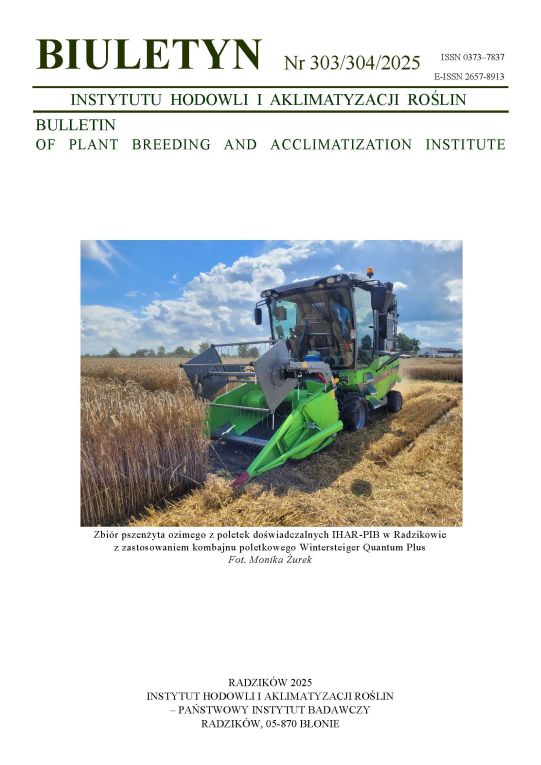What’s new in Polish agrobiotechnology, A.D. 2015?
Aleksandra Małyska
ibch@ibch.poznan.plInstytut Chemii Bioorganicznej PAN w Poznaniu (Poland)
Tomasz Twardowski
Instytut Chemii Bioorganicznej PAN w Poznaniu (Poland)
Abstract
Bioeconomy and agrobiotechnology are strictly connected. Many products available on the consumer’s market support this observation. Recent status of legislation in Poland (President Bronisław Komorowski signed on 6th Feb. 2015 the amendment of Polish Statute “About GMO”) in significant degree slows down the development of commercial application of the scientific achievements. Simultaneously the international agreements, like “Nagoya Protocol”, make the international cooperation more difficult.
Supporting Agencies
Keywords:
bioeconomy, agrobiotechnology, legislation, lawReferences
Cancun Declaration of Like-Minded Megadiversity Countries. 2002. http://www.weltvertrag.org/e375/e719/e1045/CancunDeclarationonLike-MindedMegadiversityCountries_2002_ger.pdf.
Google Scholar
European Parliament. 2013. DRAFT REPORT on the proposal for a regulation of the European Parliament and of the Council on Access to Genetic Resources and the Fair and Equitable Sharing of Benefits Arising from their Utilization in the Union (COM(2012)576–C7-0322/2012–2012/0278(COD)) Committee on the Environment, Public Health and Food Safety: 8.4.2013 Rapporteur: Sandrine Bélier.
Google Scholar
European Commission Join Research Centre. 2014. Consequences, Opportunities and Challenges of Modern Biotechnology for Europe JRC Reference Reports: http://ec.europa.eu/dgs/jrc/index.cfm.
Google Scholar
Komisja Europejska. 2012. Rozporządzenie Parlamentu Europejskiego i Rady w sprawie dostępu do zasobów genetycznych oraz sprawiedliwego i równego podziału korzyści wynikających z wykorzystania tych zasobów w Unii. Bruksela, dnia 4.10.2012 COM(2012) 576 final 2012/0278 (COD) http://eur-lex.europa.eu/LexUriServ/LexUriServ.do?uri=COM:2012:0576:FIN:PL:HTML.
Google Scholar
Małyska A., Filipiak M., Twardowski T. 2013. Opinia ekspertów o agrobiotechnologii. Nauka 1: 149 — 160.
Google Scholar
Małyska A., Twardowski T. 2011. Opinia publiczna o biotechnologii w Polsce i innych krajach Unii Europejskiej. Nauka 1: 85 — 99.
Google Scholar
Nagoya Protocol, 2010. http://www.cbd.int/abs/text/default.shtml (EN).
Google Scholar
TNS PENTOR. 2012. Polacy wobec GMO.
Google Scholar
Ustawa z dnia 22 czerwca 2001 r. o organizmach genetycznie zmodyfikowanych Dz. U. 2001 nr 76 poz. 811.
Google Scholar
Ustawa z dnia 15 stycznia 2015. O zmianie ustawy o organizmach genetycznie zmodyfikowanych oraz niektórych innych ustaw. Dz. U. 2015 poz. 277.
Google Scholar
Komitet Biotechnologii. 2015. Stanowisko w sprawie legislacji biotechnologii w Polsce. Nauka 1: 183 — 185.
Google Scholar
Authors
Tomasz TwardowskiInstytut Chemii Bioorganicznej PAN w Poznaniu Poland
Statistics
Abstract views: 110PDF downloads: 77
License
Copyright (c) 2015 Aleksandra Małyska, Tomasz Twardowski

This work is licensed under a Creative Commons Attribution-ShareAlike 4.0 International License.
Upon submitting the article, the Authors grant the Publisher a non-exclusive and free license to use the article for an indefinite period of time throughout the world in the following fields of use:
- Production and reproduction of copies of the article using a specific technique, including printing and digital technology.
- Placing on the market, lending or renting the original or copies of the article.
- Public performance, exhibition, display, reproduction, broadcasting and re-broadcasting, as well as making the article publicly available in such a way that everyone can access it at a place and time of their choice.
- Including the article in a collective work.
- Uploading an article in electronic form to electronic platforms or otherwise introducing an article in electronic form to the Internet or other network.
- Dissemination of the article in electronic form on the Internet or other network, in collective work as well as independently.
- Making the article available in an electronic version in such a way that everyone can access it at a place and time of their choice, in particular via the Internet.
Authors by sending a request for publication:
- They consent to the publication of the article in the journal,
- They agree to give the publication a DOI (Digital Object Identifier),
- They undertake to comply with the publishing house's code of ethics in accordance with the guidelines of the Committee on Publication Ethics (COPE), (http://ihar.edu.pl/biblioteka_i_wydawnictwa.php),
- They consent to the articles being made available in electronic form under the CC BY-SA 4.0 license, in open access,
- They agree to send article metadata to commercial and non-commercial journal indexing databases.














